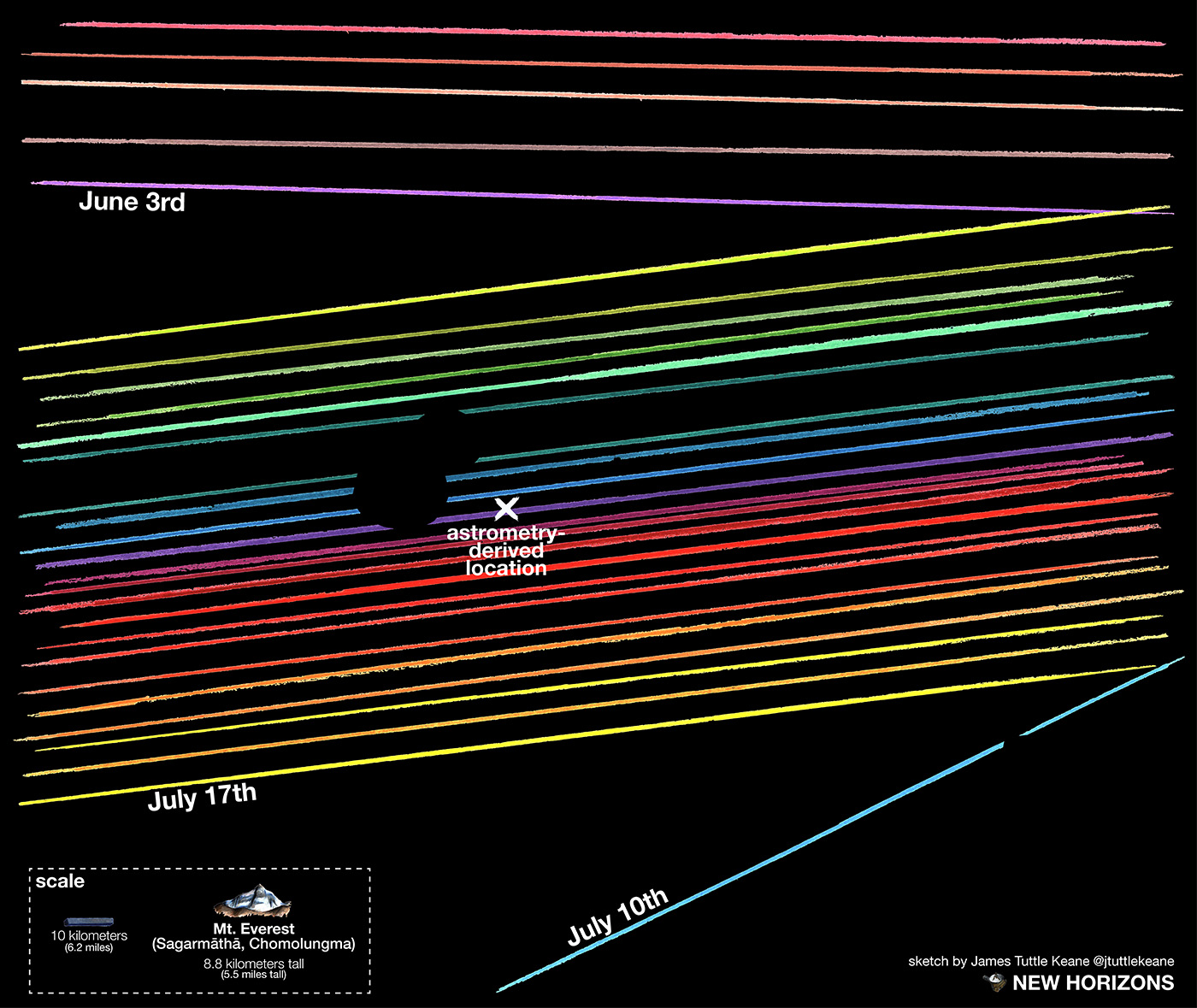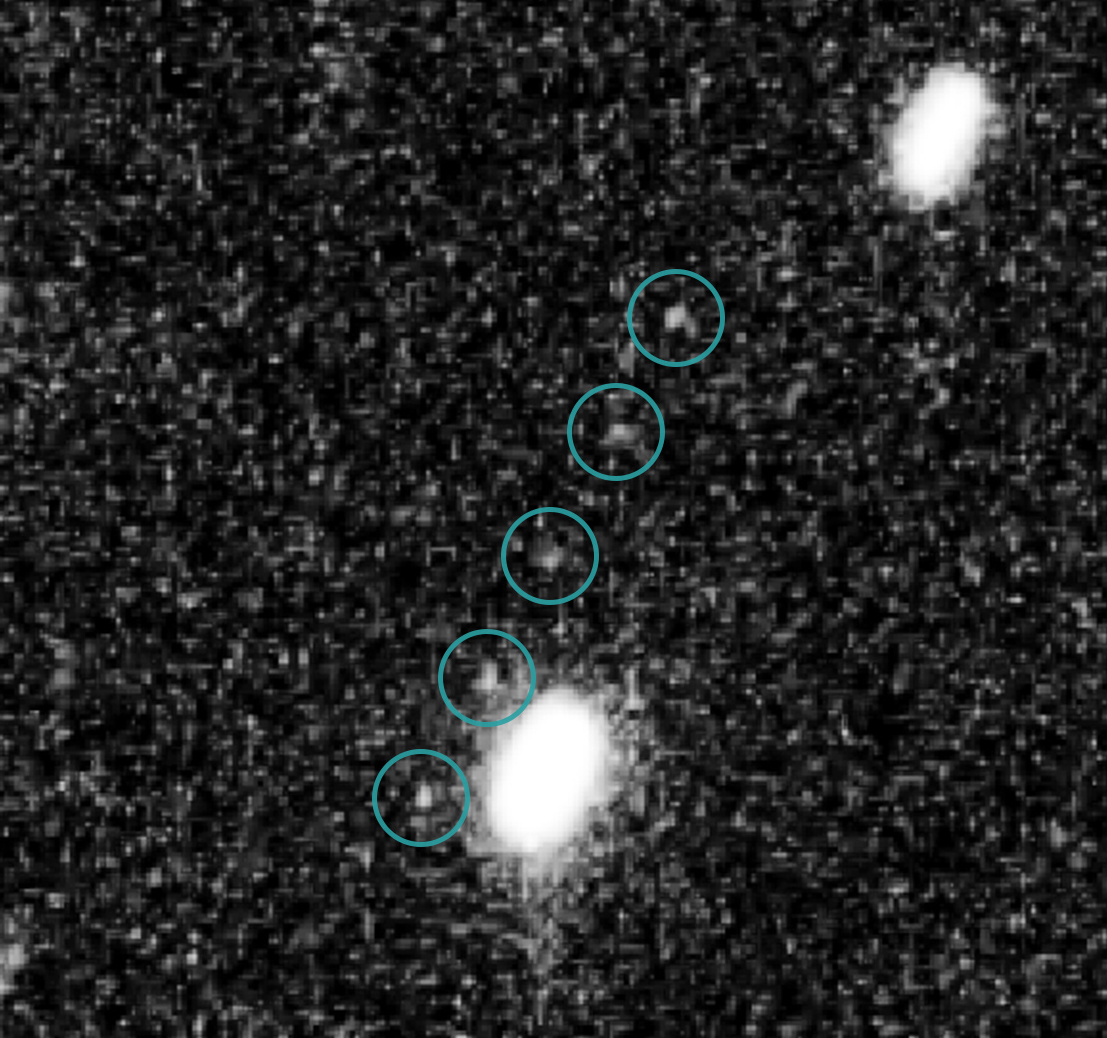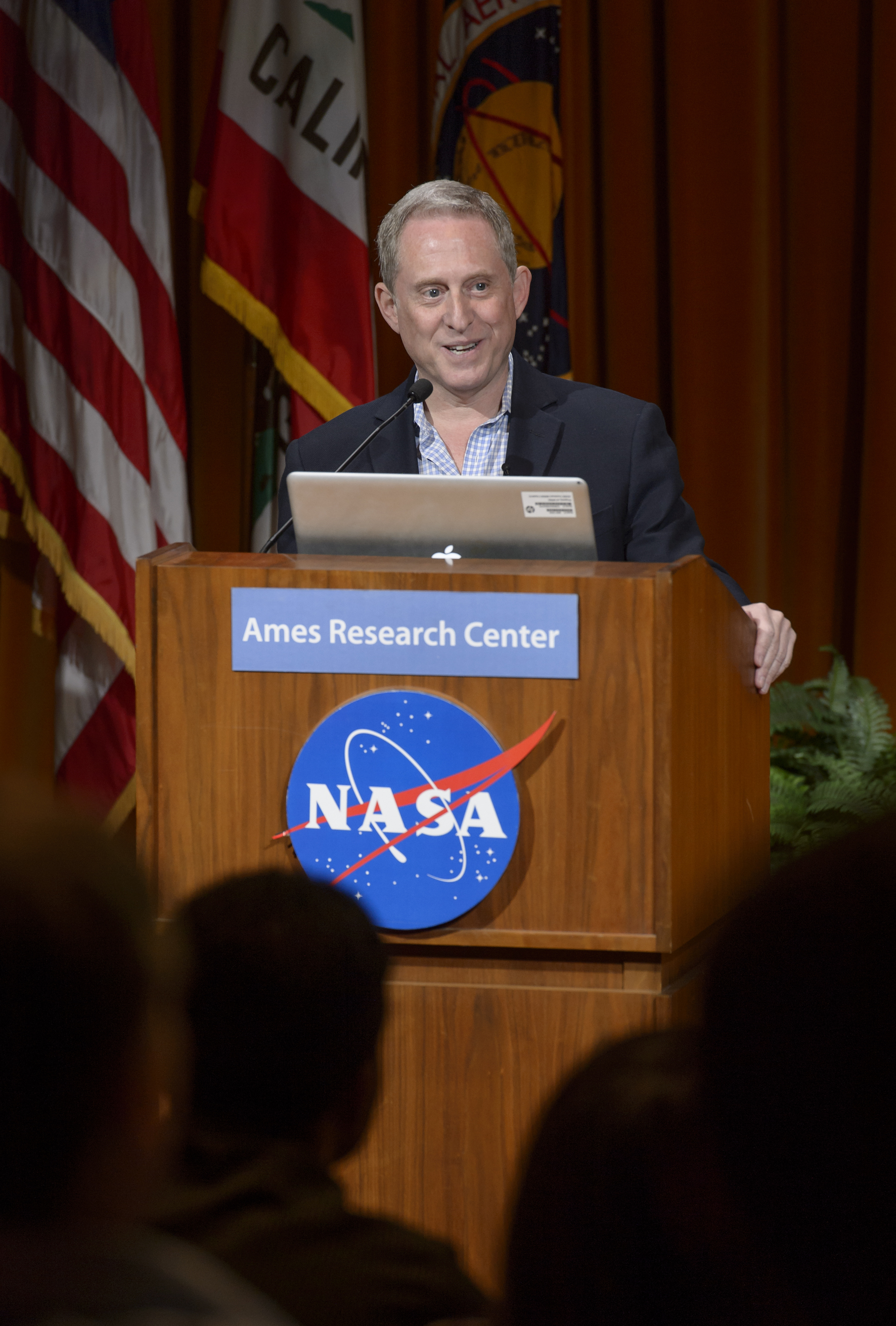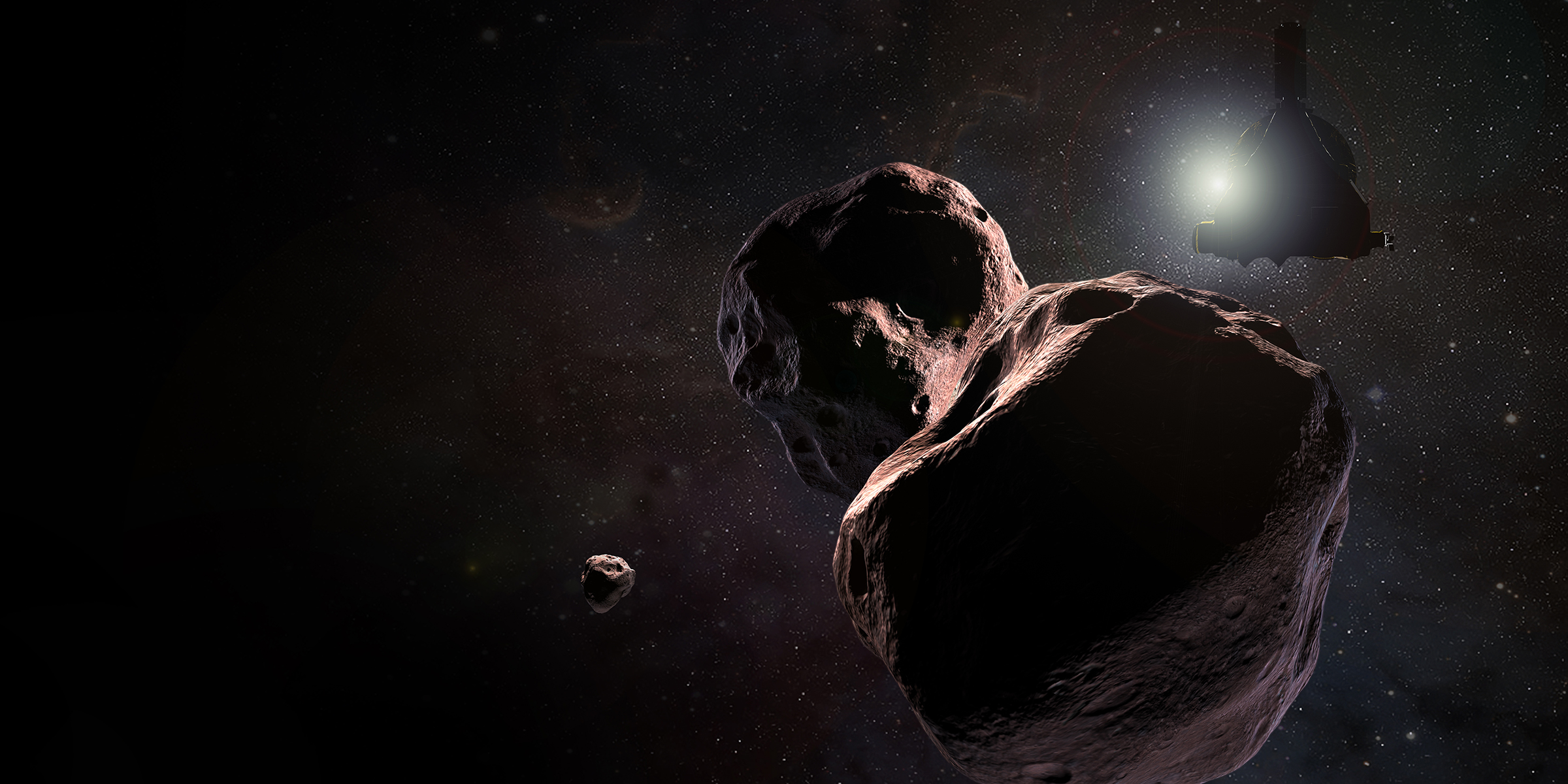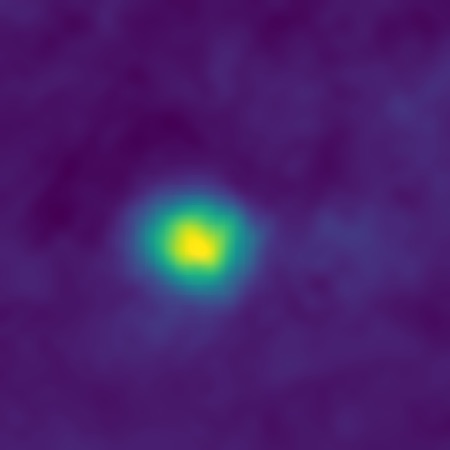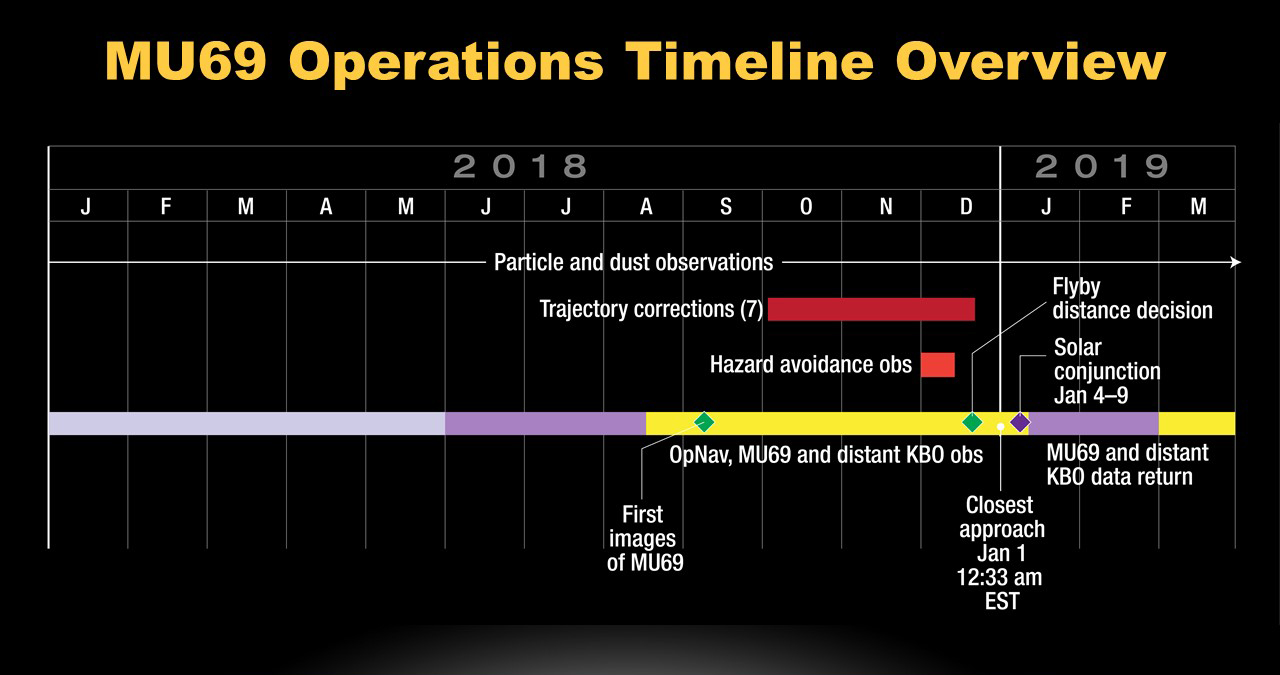Gravity Assist Podcast: The Kuiper Belt, with Alan Stern
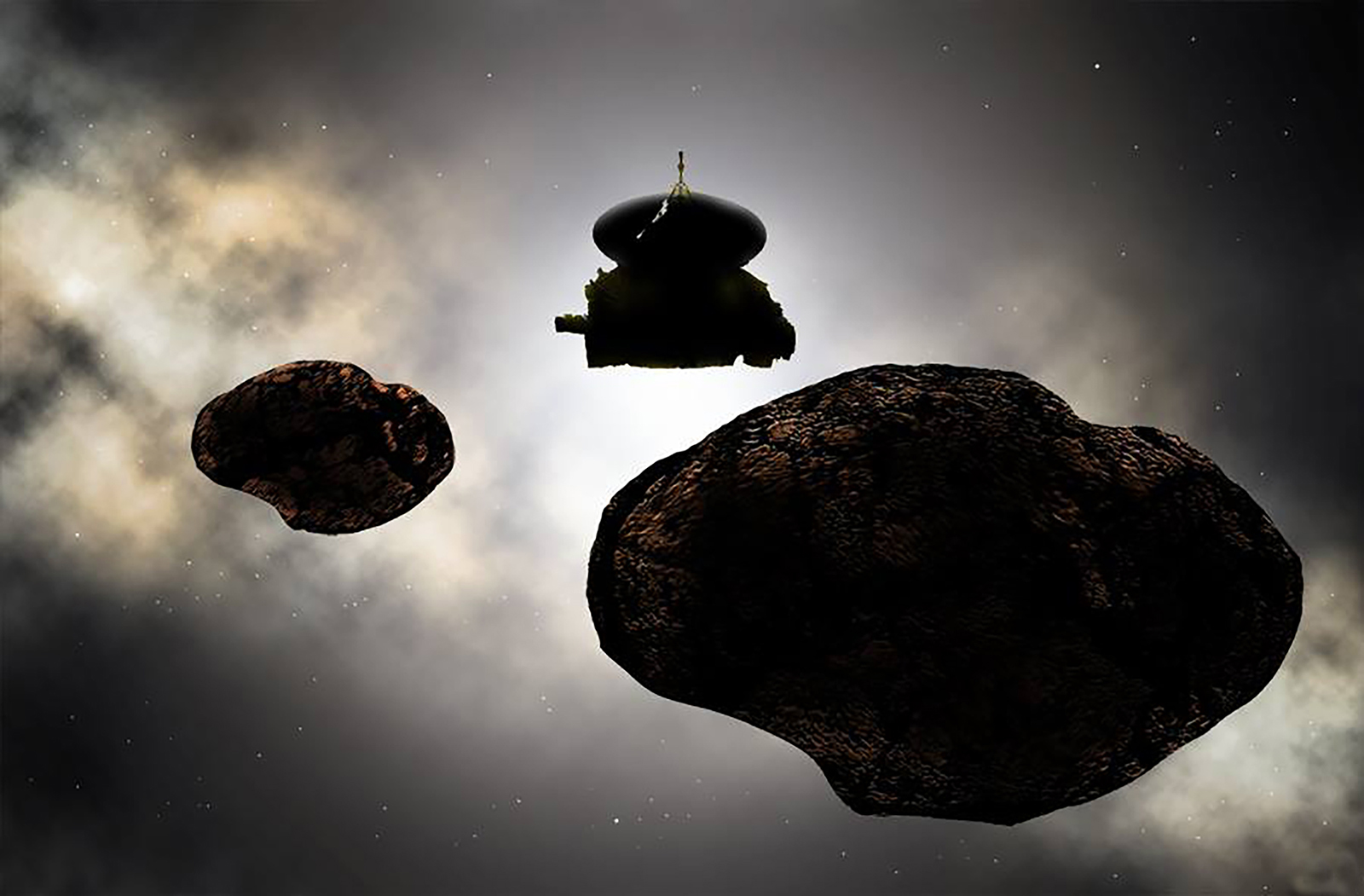
The Gravity Assist Podcast is hosted by NASA's Director of Planetary Science, Jim Green, who each week talks to some of the greatest planetary scientists on the planet, in the process giving a guided tour through the Solar System and beyond. After last week's chat with Alan Stern, who is New Horizons' Principal Investigator from the Southwest Research Institute, Stern returns to discuss the next phase of the New Horizons mission, which will be an encounter with an object deep in the Kuiper Belt, called 2014 MU69, on New Year's Day 2019.
You can listen to the full podcast here, or read the transcript below.
Jim Green: The Solar System doesn't stop at Pluto. There's something beyond it. When did the concept of the Kuiper Belt come about? [These Are the Most Out-of-This-World Photos Ever Taken — Literally]
Alan Stern: Well, the concept actually came about around the time that Pluto was discovered by Clyde Tombaugh, in 1930. A number of astronomers thought that perhaps Pluto was the tip of the iceberg and if we could see deeper with future telescopes, we'd discover a lot more out there. The most famous argument made for that was by Gerard Kuiper, who was a giant in planetary science in the middle of the 20th century, and it sort of stuck with his name on it.
The discovery of the Kuiper Belt, though, had to wait for technology to develop, with much better CCD (charge-coupled device) detectors, and fast computers to analyze mountains of data. It wasn't until the 1990s that the first Kuiper Belt object other than Pluto was discovered. Of course that object [called 1992 QB1] was a much smaller body than Pluto, as most everything is in the Kuiper Belt. Pluto's actually the largest thing in the Kuiper Belt. [Editor's note: Pluto is 2,377 kilometers across, larger than Eris, which is 2,326 kilometers in diameter. However, Eris has a slightly higher mass than Pluto.] But it turns out, most importantly, that the Kuiper Belt is dotted with other small planets like Pluto that no one really expected at all, so Pluto isn't the misfit of the outer Solar System. It was kind of the harbinger of things to come.
Jim Green: Yeah, it's really been fascinating watching these objects being discovered. In fact, many of them are binary.
Alan Stern: A lot of them are binary. Pluto itself is a binary. In fact, even this tiny little one that we're going to as our next fly-by target may well be a binary. So, that's telling us something about the original formation conditions, because we don't see binary planets down in the inner solar system. Venus isn't a binary, Mars isn't a binary, Mercury isn't a binary. Even the Earth/Moon system isn't really a binary. But, in the Kuiper Belt, [binaries are] very common. So, something was very different back then in that place that made this binary formation mechanism routine.
Breaking space news, the latest updates on rocket launches, skywatching events and more!
Jim Green: When you talk about a binary, you mean that both the primary and secondary bodies are so massive that they're actually orbiting a barycenter [a centre of mass] that exists between them?
Alan Stern: Right. It pretty much means that they're similar-sized objects orbiting one another.
Jim Green: What's really fantastic about the next step that New Horizons is taking, going to MU69, is how that object was discovered. Can you give us a little background on that?
Alan Stern: You know, we knew from the beginning when we designed New Horizons that its mission was to go on exploring after Pluto, deeper into the Kuiper Belt. We put the fuel on board and the communications capability on board, and we designed the cameras to work even further from the Sun, and so on. Then, after New Horizons launched, we started using the biggest telescopes in the world to look for possible targets. Although we found many, none were within our fuel reach. As we started getting closer and closer to Pluto, I became worried that we just weren't going to be able to successfully carry out the search out from the ground. So we asked for NASA's help and that help came in the form of the Hubble Space Telescope, which spent a good bit of time in the summer of 2014, the year before we got to Pluto, scanning the region behind Pluto where New Horizons would be headed next, to find targets. We found several and MU69 was the most easily reached of that group. That's what we're bearing down on next.
Jim Green: What's really fascinating, which happened in the summer of 2017, was the opportunity that MU69 would pass directly between us and distant stars. So those occultations occurred, but to me, they were incredible in the way you put together your teams and deployed them, and actually made some unique observations.
Alan Stern: Credit really goes to the people on those teams, and they were led by Marc Buie, who is a part of New Horizons' [science team], in doing state-of-the-art calculations, more advanced than had ever been done before, to show where the shadow of something so small, like MU69, would fly across the Earth, and then getting telescopes in the right place at the right time, in the shadow, way down in South America, in the middle of the winter, in one of the windiest places in Patagonia. And it all worked out. Five telescopes saw MU69 make this particular nondescript star wink out. But, each telescope saw it wink out for a different period of time, because it observed from a slightly different location. Therefore, we could actually use those individual tracks to paint out the shape of MU69, get its size and its surface reflectivity. The most interesting result probably is that it looks like it could be a double itself, a binary, either a contact binary, where the two lobes are actually touching, or two objects in orbit around one another, like Pluto and Charon, but on a much tinier scale.
Jim Green: Is there another opportunity where we could catch it in another occultation?
Alan Stern: There is another one coming next August [2018] across some pretty rainy parts of South America, unfortunately, and some pretty dangerous parts of North Africa, with a lot of Atlantic Ocean in between. So, we're looking at ways to go after that, which would be about six months before the flyby of MU69, and whether we use ships or aeroplanes or perhaps find some places where the weather's good enough and the local conditions are safe enough to put telescopes on the ground. We could learn a lot that would help give us some more advanced warning about what we're going to find when we get there in the holidays of 2018.
Jim Green: What also amazes me is how faint MU69 is. It's magnitude +27 [editor's note: for comparison Sirius, the brightest star in the sky, is magnitude —1.46, with higher magnitudes indicating fainter objects]. For those astronomers out there, it means there's no way any Earth telescope would be able to see it. So, it's really one that had to be found by Hubble.
Alan Stern: It's true, only Hubble, because it's above the atmosphere, could do it. Even after we found MU69, and knew exactly where to look, we'd look with very large telescopes, like the Keck and the Gemini telescopes and others, Subaru, and they've never spotted it from the ground. In fact, the only time it's been spotted except for Hubble was during those occultations [Editor's note: to clarify, during the occultations astronomers did not see MU29 directly; what they saw was it blocking the light of the distant stars that it moved in front of, and casting a small shadow onto the Earth].
Jim Green: Just a few photons.
Alan Stern: It's extremely faint. Twenty-seventh magnitude means that it's almost ten million times fainter than Pluto, which itself is a million times too faint for your eye to see. It's just mind boggling.
Jim Green: To me, it was clearly the greatest occultation that we've ever captured.
Alan Stern: It was a major breakthrough. What Buie and his team pulled off was a masterstroke in not only prediction, but execution. And they made it look easy. It was not. It was really beyond the state-of-the-art until they did it.
Jim Green: That really tells you what it takes to put together a team of talented people and let them do their work.
Alan Stern: Yeah. And I was on two of the occultation expeditions and, you know, folks were working 20 hours a day in very harsh conditions, in the cold of winter and the wind, and nights and weekends. They were all very highly motivated to do it, and they pulled it off.
Jim Green: How was that achieved in terms of being able to put out an array of telescopes? I think you had something like 24 telescopes in a line?
Alan Stern: We did. We set them up like a fence line, perpendicular to the path, so we would catch our prey, even if it was a little north or south of where we were going to be. We got lots of help from the local Argentinian people, the national government, their space agency CONAE, and the Governor and the Mayor of the town that we were in gave us all kinds of support, ranging from police escorts to blocking the highway so that the trucks wouldn't come down with their bright headlights and ruin the observations, weather support, first aid and so on. They really bent over backwards to help, because they found out NASA was in town and, to them, that was really something to be a part of. The NASA brand was what did the trick. That, and one very helpful translator named Adriana Ocampo.
Jim Green: Yeah, she's a rock star down there, that's for sure, she's a fabulous scientist who has worked on Chicxulub and the extinction of the dinosaurs. But out of the three occultations, two we caught on the ground, but for the other one we had to do something else.
Alan Stern: One of them was over the ocean, and there are no observatories floating around in the ocean. So, we took NASA's biggest airborne observatory called SOFIA, which was based for the summer down in Christchurch, New Zealand, to make observations of the southern sky. We were awarded time to fly it up to the occultation path, several thousand miles north, near Tahiti. I was on that mission as well. We flew five hours north out of Christchurch, did a u-turn and came back, and just as we turned south, the occultation event occurred, and we then flew all the way back to Christchurch with the data. So here's this big lumbering Boeing 747 with a telescope the size of Hubble inside of it, looking out of a door, a hatch in the side, flying at 45,000 feet with a flight crew and a telescope crew and the science crew. They were so on target that they were less than five wingspans off target at the exact moment of the occultation. It was an amazing accomplishment.
Jim Green: During the Pluto fly-by we were worried about the safety of our spacecraft as we flew past. Are there similar concerns about debris in the area around MU69?
Alan Stern: Yeah, and we're worried, primarily, because we're going so fast. You know, we're going at ten miles [16 kilometers] per second. So even if you hit something small, it's a very powerful wallop, and there's basically no good place to hit New Horizons. Even [something as small as] a rice pellet that hits the spacecraft could cut a fuel line or take out a circuit board or destroy an instrument or what have you. So, we're trying to certify the path as best we can. The occultations help us with that, because [immediately] before and after the main occultation of the hard body itself, you can look for dips in the light due to rings or other debris structures that could be in orbit.Fortunately, we didn't find any. So, that tells us that some of the worst disaster scenarios that could be out there aren't out there at MU69. They might be somewhere else, but they're not at MU69. But, still, we have to look even harder to certify the path on approach. We'll do that with our own telescopes on board, and our own cameras on board, by sending that data back to Earth throughout the fall of 2018, and we'll be scrutinizing those images as best we can. If we find anything that's concerning, we've planned an entire backup fly-by at a greater distance, which is presumably safer, to give ourselves some options for still getting good data, but avoiding danger if it's in our path for the very closest approach.
Jim Green: One of the things that I always wondered about is that we get comets from very far away in the Oort Cloud, but there's got to be comets coming out of the Kuiper Belt, too. What do you think the relationship between Pluto-like objects and comets is?
Alan Stern: Well, that's a really good question. We know that comets, the short-period comets, come from the Kuiper Belt. We've seen quite a number of those up close with spacecraft missions; Rosetta recently orbited one for two years, but we had various American and European spacecraft fly by comets, also some old Soviet spacecraft that flew by comets in the 1980s. They don't look anything like planets. They're small and lumpy and they don't have the geological processes that big worlds, like Pluto have.
Also their composition turns out to be quite different. We see on the surface of Pluto much more exotic ices than we see on the surfaces of comets, things like nitrogen-ice that are very rare in comets. We see a bound atmosphere that we don't see around comets. So, just like the asteroids and the Earth are different, the comets and the small planets of the Kuiper Belt are very different. But, they're all teaching us about the origin of the Solar System and about the types of objects we can expect to find around other stars. It's all part of the basic exploration that we do, as we open up the Solar System to space travel.
Jim Green: After it flies by MU69 on 1 January 2019, New Horizons is heading out of the Solar System. Is it going in the same direction that the Voyager spacecraft are?
Alan Stern: It is going in roughly the same direction as the Voyagers and, like the Voyagers, it will escape out into the Galaxy.
Jim Green: New Horizons has radioisotope power and that will last for a considerable length of time past MU69. Do you think it can make it to the heliopause?
Alan Stern: We have a lot of Kuiper Belt work left to do before we get to the heliopause. The heliopause is probably 100 astronomical units (AU) out [Editor's note: New Horizons' fly-by with MU69 will take place 43.3 AU out from the Sun]. If you calculate the amount of power that we have on board, we could still be operating then. It'll be in the mid-to-late 2030s. The thing about the heliopause is that it 'breathes' in and out with the solar cycle, and sometimes it's further and sometimes it's closer. Although we can predict exactly where New Horizons will be in any given year, no one knows how to predict [the Sun's activity at any given time]. So, it's hard to know whether in the 2030s the heliopause will be farther away and we run out of power before we get there, or if it will be closer and we cross it into interstellar space. That's part of the excitement of that part of the mission that'll come after the planetary science is more or less done, which will probably be in the 2020s. That will be a very valuable mission scientifically because the instrumentation on board New Horizons is a generation more sophisticated than the Voyagers carry. So, we can learn new things about that whole region of the Solar System with these much more sensitive instruments.
Jim Green: One of the things that New Horizons is doing between now and when it flies by MU69 is looking at other Kuiper Belt objects. What do you hope to achieve by doing that?
Alan Stern: We're trying to put MU69 in context. We're going to swoop down on it and study it with this spectacular battery of instruments and get all this detail, but the question is, how do the other ones look in comparison? What are their shapes like? How many satellites do they have? What are their surface properties like, compared to MU69? So, we're actually looking at dozens of other [objects] with our telescope camera, called LORRI, on board, and not just before MU69. There are a lot of them to look at after MU69, because the Kuiper Belt doesn't run out. It actually turns into what's called the Extended Belt, or the Scattered Disk, that goes out hundreds of astronomical units. So, it's all about context and making sure that we understand this valuable data set at MU69 compared to all the other things out there in the Kuiper Belt.
Jim Green: I always ask my guests about what their 'gravity assist' was. What really got you excited about what we're doing today?
Alan Stern: Well, I've had a number of gravity assists in my life, but I want to tell you about a very special one that occurred just a few weeks after the New Horizons fly-by. I was in Vermont at a convention of amateur astronomers in August 2015, and after my talk was over and most of the crowd had dissipated, there was someone there who said, "I've just been waiting and waiting to come up and tell you something." She said, "You know, people often say that our generation missed the boat on history, that we didn't see the great world war that triumphed over evil, and we didn't have a chance to see the Moon landings or the birth of the computer revolution that we all live with now, and so many other things. We often hear the meme that we came too late for all those historic things." Then she said, "I just want to tell you New Horizons is the best thing that's ever happened in my lifetime." And, wow, what a gravity assist for a scientist to hear something like that, when you're a physicist and a planetary scientist who works on the research aspects and the technical aspects, and to hear that you could change people's lives with the project that we did and that those of us on New Horizons could actually inspire someone that way, that was my gravity assist. And, it's going to power me for the next 30 years to do more exploration.
This story was provided by Astrobiology Magazine, a web-based publication sponsored by the NASA astrobiology program. This version of the story published on Space.com. Follow us @Spacedotcom, Facebook or Google+.

The National Aeronautics and Space Administration (NASA) is the U.S. government agency in charge of the civilian space program as well as aeronautics and aerospace research. Founded in 1958, NASA is a civilian space agency aimed at exploring the universe with space telescopes, satellites, robotic spacecraft, astronauts and more. The space agency has 10 major centers based across the U.S. and launches robotic and crewed missions from the Kennedy Space Center in Cape Canaveral Florida. Its astronaut corps is based at the Johnson Space Center in Houston. To follow NASA's latest mission, follow the space agency on Twitter or any other social channel, visit: nasa.gov.

